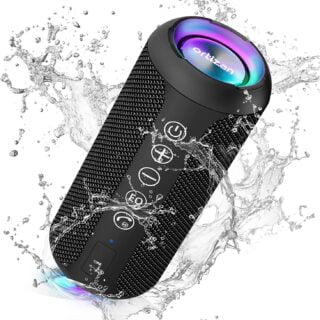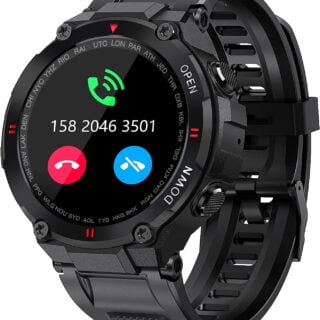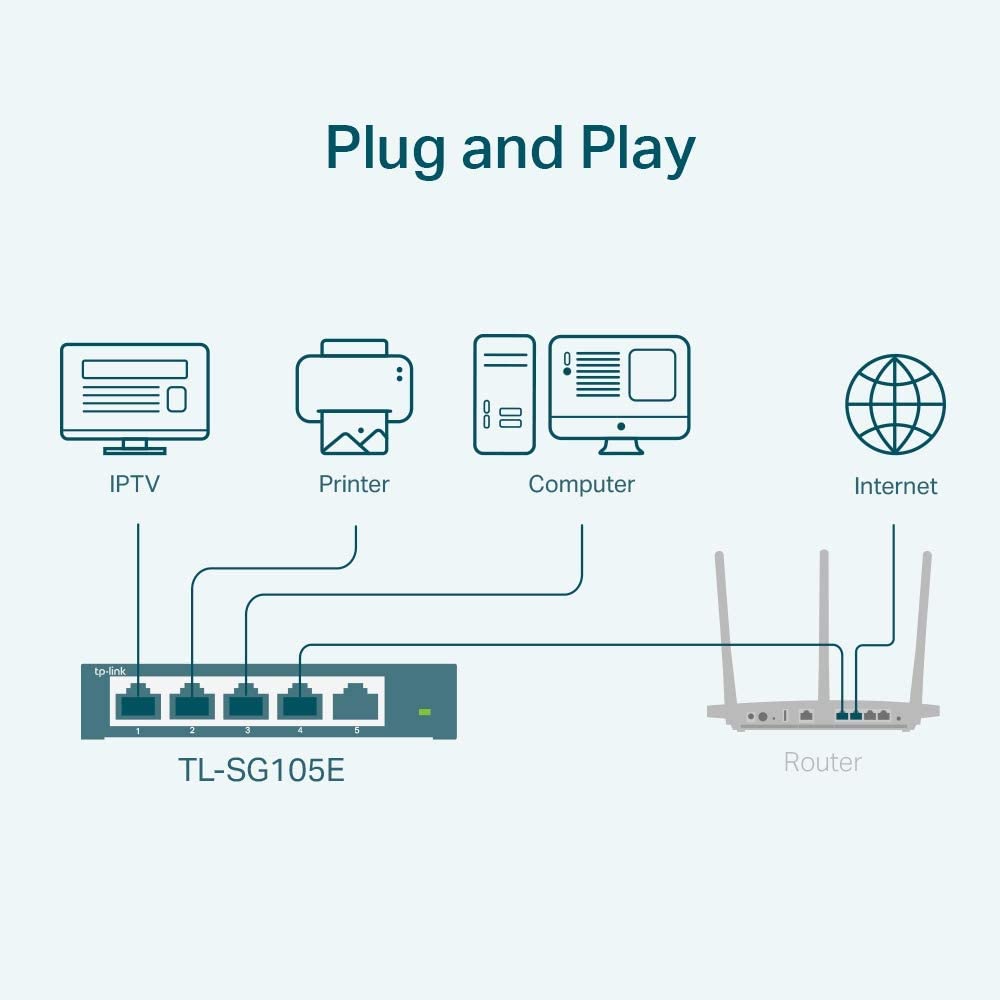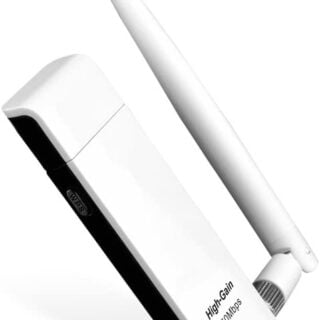Category
Recent Comments
Change The Currency
Top rated products
-
 TP-Link USB WiFi Adapter for Desktop PC,
Rated 5.00 out of 527,62 $
TP-Link USB WiFi Adapter for Desktop PC,
Rated 5.00 out of 527,62 $ -
 Portable Bluetooth Speaker, IPX7 Waterproof
Rated 5.00 out of 548,77 $
Portable Bluetooth Speaker, IPX7 Waterproof
Rated 5.00 out of 548,77 $ -
 HDMI to RCA Cable
Rated 5.00 out of 515,86 $
HDMI to RCA Cable
Rated 5.00 out of 515,86 $ -
 Military Smart Watch for Men Outdoor Waterproof
Rated 5.00 out of 562,87 $
Military Smart Watch for Men Outdoor Waterproof
Rated 5.00 out of 562,87 $ -
 Cigarette Lighter Adapter 3 Socket
Rated 5.00 out of 524,09 $
Cigarette Lighter Adapter 3 Socket
Rated 5.00 out of 524,09 $
Recent reviews
-
 Famiworths Single Serve Coffee Maker
Rated 4 out of 5by Chris
Famiworths Single Serve Coffee Maker
Rated 4 out of 5by Chris -
 Famiworths Single Serve Coffee Maker
Rated 5 out of 5by Alsia
Famiworths Single Serve Coffee Maker
Rated 5 out of 5by Alsia
TP-Link multi Port Gigabit Switch
22,92 $ – 29,97 $
TP-Link 5 Port Gigabit Switch | Easy Smart Managed | Plug & Play | Limited Lifetime Protection | Desktop/Wall-Mount | Shielded Ports | Support QoS, Vlan, IGMP and Link Aggregation (TL-SG105E)
TL-SG105E 5-Port Gigabit easy smart Switch is an ideal upgrade from an unmanaged Switch, designed for small and medium business networks that require simple network management. Network administrators can effectively monitor traffic via port mirroring, loop prevention and cable Diagnostics features. To optimize traffic on your business network, TL-SG105E offers both port and tag based QoS to keep latency-sensitive traffic moving smoothly and jitter-free. Additionally, port-based, tag-based and MTU VLAN can improve security and meet more network segmentation requirements. Moreover, with its innovative energy-efficient technology, the TL-SG105E can save up to 75% of power consumption, making it an solution for your business network.
| Size | 5 Port w/ Enhanced Features, 5 Port |
|---|
Related products
-
TP-Link USB WiFi Adapter for Desktop PC,
27,62 $delivery between 2024/07/30 - 2024/08/02Add to cartTP-Link USB WiFi Adapter for Desktop PC, AC1300Mbps USB 3.0 WiFi Dual Band Network Adapter with 2.4GHz/5GHz High Gain Antenna(Archer T3U Plus), MU-MIMO, Windows 11/10/8.1/8/7/XP, Mac OS 10.9-10.15 : Electronics
-
TP-Link WiFi Access Point 2.4Ghz 300Mbps,
27,62 $ – 64,64 $delivery between 2024/07/30 - 2024/08/02Select options This product has multiple variants. The options may be chosen on the product pageTP-Link WiFi Access Point TL-WA801N, 2.4Ghz 300Mbps, Supports Multi-SSID/Client/Bridge/Range Extender, 2 Fixed Antennas, Passive PoE Injector Included : Electronics
-
Wi-Fi Range Extender – Coverage Up to 800 Ft
56,32 $delivery between 2024/07/30 - 2024/08/02Select options This product has multiple variants. The options may be chosen on the product pageNETGEAR Wi-Fi Range Extender EX2700 – Coverage Up to 800 Sq Ft and 10 devices with N300 Wireless Signal Booster & Repeater (Up to 300Mbps Speed), and Compact Wall Plug Design : Electronics
-
TP-Link Nano USB Wifi Dongle 150Mbps
26,45 $delivery between 2024/07/30 - 2024/08/02Add to cartTP-Link Nano USB Wifi Dongle 150Mbps High Gain Wireless Network Adapter for PC Desktop and Laptops. Supports Win10/8.1/8/7/XP Linux 2.6.18-4.4.3, Mac OS 10.9-10.15 (TL-WN722N) : Electronics









TLDR: If you have issues with Zoom, streaming services, or just overall spotty internet connection with your WiFi, you may want to consider getting the 5 port switch (not PoE! Save yourself some money) along with some CAT 6 cables (for gigabit internet). Unmanaged works fine for just ‘plug and play’. It’s insane how much it helps! You shouldn’t have to do much besides plugging in everything and selecting the ‘Ethernet’ option on the device if it doesn’t so automatically. They’re reliable and easy to setup and use.The long story:I had purchased the PoE one at first to allow it to later be utilized for a security station if need be (or if I had something fun to play with), but I also got the unmanaged 5 port (without PoE) on accident. The one WITHOUT PoE is much smaller (3/4 the size it feels like). I would recommend the 5 or 8 port if you just have a few things you wish to plug in to it. PoE is not something you should worry about unless you know your devices require it. My household has issues with WiFi, so many devices can’t connect well enough to have an enjoyable experience. WiFi extenders, a new router, etc, did not work for us in the past (and ended up causing many issues), so we resulted to using Ethernet for our most used devices. Our internet plan is top tier for our area, so we expected better connections. Turns out we just do a whole lot of internet stuff to bog down the main router and our bandwidth!The household setup:One switch (PoE 5 port, unmanaged) is at the router since the router only offers 2 Ethernet ports. This switch services a smart TV, computer, and free cable for whatever device we decide to plug in (be a laptop or game console). It also services another switch (5 port, unmanaged) across the house. That way we only have one Ethernet cable running across the house until we can put it under the house.The second switch services a WiFi station, computer, game console, and smart TV. The computer is on 24/7 and the TV is on a majority of the day and night streaming HD movies and shows from multiple services. All of these are fairly ‘heavy’ devices on this switch, as in they are constantly downloading or uploading content all waking hours of the day.All devices are connected with CAT 7 Ethernet cables, but CAT 6 work just fine. (I would recommend CAT 6 or CAT6a since it is certified to run gigabit. CAT 7 is overkill and I do not recommend it because of price and it’s not standardized as much as the others).Results:So far everyone in the household has noticed an improvement not only with the devices plugged into the switches, but also the overall WiFi quality. Smart phones are no longer ‘dropped’, the printer remains connected, and even most laptops are seeing better speeds and responsiveness on the WiFi. My household is especially polluted with plug and play devices (such as Amazon Echos, Ring Cameras, wireless smart plugs, etc), and all of these seem more responsive now that we have gotten the ‘heavy’ loads off of the WiFi.The second switch that is piggybacking off of the first switch has no issues, and all devices are able to preform to their peak. Even though not all of them are gigabit, they seem to greatly benefit from being on Ethernet. Zoom calls are much better too. Before we could only have 1 person on zoom but now everyone can get on so long as only one person is on WiFi.The switches do not heat too much and are easily concealable, but require power. I do not recommend stuffing them into a blanket closet or among pillows though, even though it’s tempting to hide their flashing lights.Overall they have exceeded my expectations. This review will be updated in the future if any issues arise.
Its a switch! Does what it needs to do.Pros:* Runs cold to the touch even when under decent load with multiple devices so its probably very energy efficient.* Seems to be very high performance! No latency or bandwidth changes vs direct CAT6a connection on gigabit ethernet. Tested with up to 3 devices under load. Latency was statistically unchanged and bandwidth/QoS was what you’d expect on paper so overhead is super low and on board protocols are implemented extremely well! Grain of salt though… I haven’t formally benchmarked or even really used SOHO switches since the 10/100 days. Maybe all makes/models are similar nowadays, but 20 years ago using switches was only a tad better than a hub in terms collision prevention and simple QoS.* Physical build quality is top notch, with one caveat (see Cons)Cons:* Design of metal casing is probably perfect for mounting on the side of standard 1U or 2U racks, warehouse racks, or anything else with standardized screw hole placement and (ideally) the ability to come in from behind or at least see what you’re doing. I needed to mount this to a wall in my home office where I couldn’t just screw into a rack with standard mounts and slide the switch in place 5 seconds later.There may be a much better way, but the only solution I could come up with (in order to use the rubber feet as standoffs to allow airflow) was to take the housing apart and unscrew/remove the PCB to see what the correct distance between screws needed to be. In theory this would be the last step but unfortunately problem #2 (really the only roadblock in retrospect) was that when wall mounting, the shape of the mounting cutouts are such that you (or at least me?)don’t give you enough “turning radius” to get the switch mounted without the offset from the screw head and the wall surface being stupidly long.The only solution where the standoff distance was both far enough to get the screw heads in there while ALSO getting it to mount securely without flapping around loose was to clip the opening a bit with sheet metal snips. This was a tad challenging but doable, mostly because of the cramped areas for maneuver.My recommended wall mount steps (unless someone has a better way) are:1. Insert the screws in the mounting holes, and position in the narrower “top” area where they loosely stay in place when held in by hand. This will be the distance when mounted. 2. Gently press the switch and screws into the wall just enough to create 2 small dents so you know where to drill.3. Drill. I didn’t need a drywall screw due to wood paneling, but use drywall screws if bare drywall. If you think you don’t need to just do it anyway. Its cheap, easy, and a good best practice to prevent yanks from plugged in devices, etc.4. Screw the screws in 95% of the way. You may be able to just mount the switch ok. If not, you may need to do step 5…5. (Optional). If necessary AND you know what you’re doing, AND you don’t care about warranties, open up the mounting cavity with metal snips, but only after you have unscrewed the device housing and have carefully removed all the (guts). Put them aside in an anti static bag to keep them safe.Start by clipping tiny slivers from the two mounting cavities on the bottom device housing piece. Adjust the screw depth until you can easily mount the housing without it feeling loose. You may need to test/adjust a few times, since the screw head will be blocked by sheet metal. This is the core design flaw, otherwise you could just (at worst) unscrew the top housing cover, remove the “guts”, and just screw it in by hand, with the final step being to put everything back together (annoying but simple if you own magnetic screwdrivers).Again, only do this if no viable alternatives exist for you, as I’m sure it voids the warranty.Conclusion? Buy this excellent product, just be prepared for a “project” if this is going on a wall in a SOHO setting.
No technical issues. Plug in and go. The only thing to double check is the ethernet port positions as they are in the front of the unit and the power jack is in the back. It’s really ideal for mounting behind a desk or cabinet for easier access. May not look as nice if you are planning to place it where it’s easily seen. Overall, happy with the purchase and working well. I did not measure any packets, so not sure of overall technical performance, but haven’t noticed any networking problems.
I needed to hardwire more connections to my modem since my apartment does weird things to the wifi in the bedroom (literally next door to the living room in a tiny apartment). This was perfect. No issues whatsoever.
I have an older surface pro version, Either the 2nd or 3rd, and lately with new wifi my laptop doesn’t connect. I don’t know why. I’ve been told in the end I probably need to buy an updated surface pro or new laptop, but I refuse to because my surface pro is still working as perfectly as it did when I first bought it years ago.This TP link helps to link me straight into the internet network and I can work from home and use my surface pro like normal. So far have had it maybe since Feb or March? I don’t remember but it’s been working perfectly. I also can plug in my printer cord into it, so that I don’t have to plug the printer into the surface pro and it leaves a port open.So far so good! Thank you for making it possible to let me keep my surface pro for hopefully another couple years. Now it’s pretty much a desktop lol.